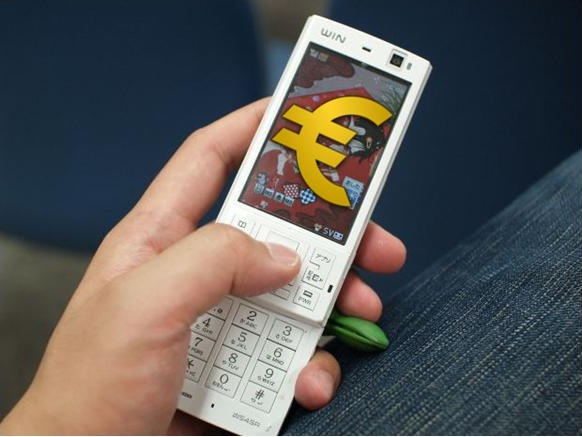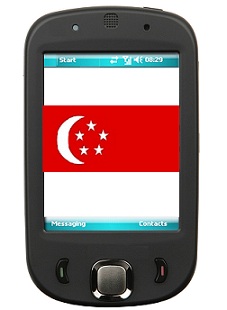A new survey has revealed that a growing number of companies in the E.U. accept payments via smartphones.
A new report has recently been released by yStats.com, a secondary market research company based in Hamburg, Germany, which has suggested that European mobile payments is a growing trend in the continent.
The report also pointed out that more companies are accepting transactions online, boosting regular e-commerce.
The “Europe Online Payment Methods 2013 – Second Half 2013” report showed that the use of smartphones for European mobile payments is growing in use for making traditional retail purchases in the E.U. countries as well as in other regions around the world. The report pointed out that the transactions being completed by way of smartphones and tablets has been increasing its share of the overall digital space, and that it is expected to make its way into the double digits by the year 2020.
In 2010, European mobile payments represented only 1 percent of all online forms of transaction.
 This will require an extremely rapid level of growth an adoption if it is to reach at least 10 percent of online transactions only a decade later. The reports data showed that this technology is making the biggest headway in Turkey, Spain, and the Netherlands, among countries located in Europe. This is particularly true in the use of smartphone banking. The highest traditional online banking – where it is above 80 percent, is in Norway, Finland, and the Netherlands.
This will require an extremely rapid level of growth an adoption if it is to reach at least 10 percent of online transactions only a decade later. The reports data showed that this technology is making the biggest headway in Turkey, Spain, and the Netherlands, among countries located in Europe. This is particularly true in the use of smartphone banking. The highest traditional online banking – where it is above 80 percent, is in Norway, Finland, and the Netherlands.
There is extremely promising growth being seen in European mobile payments and traditional online transactions in the mature markets of the central part of the continent. For example, in Germany, PayPal and invoice were the two most popular forms of B2C E-Commerce transaction methods. Furthermore, the smartphone paying method is starting to take off quickly in areas that have implemented terminals for parking or ticketing, with 10 percent of consumers having tried those technologies at least one time in 2012.
The report predicted that in the Western sub-region of the continent, the transaction value of European mobile payments will be growing by half in 2013 when compared to the year before.
This will be the first person to person experience that will be available to residents of the country.
Maybank Singapore has just announced that it has become the first person to person mobile payments service in the country with the launch of its Maybank Mobile Money app.
This allows consumers who have the app on their smartphones to send funds to anyone.
Through the use of this mobile payments service, people in Singapore will be able to download the app and then send money to whomever they want through the use of a cell number created by Tagit. That company is an award winning mobile device solutions company.
The mobile payments service is designed to allow funds to be sent between online banking customers.
 This gives them the opportunity to share funds through a mobile payments service at any time through a Singapore-registered cell phone number. Then, the recipient can collect the money directly into his or her bank account based in Singapore. This service closely reflects the growing connection that people in the country have with their smartphones, as they use them for a growing number of their everyday activities. Maybank is also using it to help to further decrease the current reliance that the population has on cash.
This gives them the opportunity to share funds through a mobile payments service at any time through a Singapore-registered cell phone number. Then, the recipient can collect the money directly into his or her bank account based in Singapore. This service closely reflects the growing connection that people in the country have with their smartphones, as they use them for a growing number of their everyday activities. Maybank is also using it to help to further decrease the current reliance that the population has on cash.
According to the Maybank Singapore head of information technology and virtual banking, Lim Kuo Sion, “Consumer behavior is changing rapidly, aided by newer technologies. With the growth of Singapore’s smart phone and tablet penetration, we see a greater reliance on our trusted devices for daily tasks, including financial transactions.” He went on to add that this mobile payments service is an innovative solution that can simplify the process even more by allowing customers to take control over their own transactions to known recipients. He underscored that this convenient method is instant and secure, making it highly appealing.
The belief at Maybank Singapore is that by giving consumers the chance to send mobile payments directly to smartphone numbers, it will reduce the need to use checks and cash when giving money from one person to another. This will also provide customers with an additional transaction method that will suit their increasingly mobile dependent lifestyles.
 This will require an extremely rapid level of growth an adoption if it is to reach at least 10 percent of online transactions only a decade later. The reports data showed that this technology is making the biggest headway in Turkey, Spain, and the Netherlands, among countries located in Europe. This is particularly true in the use of smartphone banking. The highest traditional online banking – where it is above 80 percent, is in Norway, Finland, and the Netherlands.
This will require an extremely rapid level of growth an adoption if it is to reach at least 10 percent of online transactions only a decade later. The reports data showed that this technology is making the biggest headway in Turkey, Spain, and the Netherlands, among countries located in Europe. This is particularly true in the use of smartphone banking. The highest traditional online banking – where it is above 80 percent, is in Norway, Finland, and the Netherlands.
 This gives them the opportunity to share funds through a mobile payments service at any time through a Singapore-registered cell phone number. Then, the recipient can collect the money directly into his or her bank account based in Singapore. This service closely reflects the growing connection that people in the country have with their smartphones, as they use them for a growing number of their everyday activities. Maybank is also using it to help to further decrease the current reliance that the population has on cash.
This gives them the opportunity to share funds through a mobile payments service at any time through a Singapore-registered cell phone number. Then, the recipient can collect the money directly into his or her bank account based in Singapore. This service closely reflects the growing connection that people in the country have with their smartphones, as they use them for a growing number of their everyday activities. Maybank is also using it to help to further decrease the current reliance that the population has on cash.